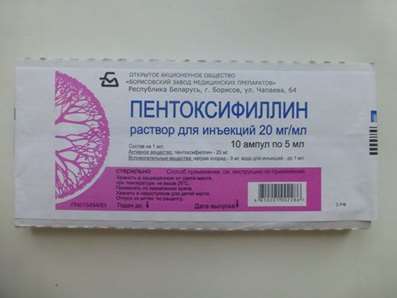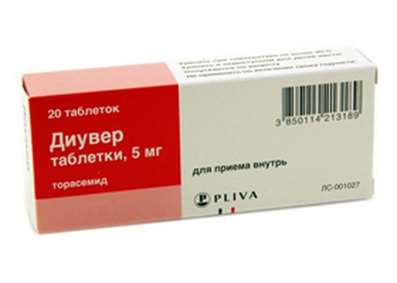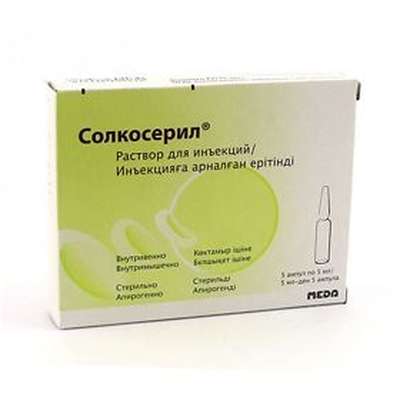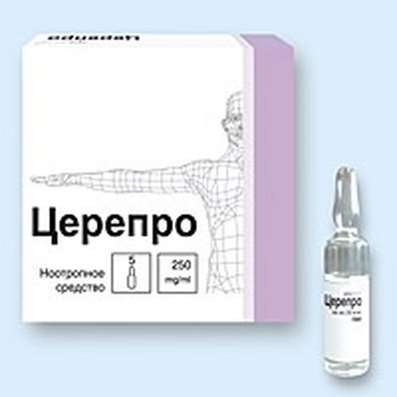Instruction for use: Cetirinax
I want this, give me price
Dosage form: Film coated tablets
Active substance: Cetirizine
ATX
R06AE07 Cetirizine
Pharmacological groups:
H1-antihistamines
The nosological classification (ICD-10)
H10.1 Acute atopic conjunctivitis: Allergic conjunctivitis; Allergic eye diseases; Allergic conjunctivitis; Allergic conjunctivitis caused by chemical and physical factors; Allergic rhinoconjunctivitis; Allergic inflammation of the eyes; Spring Qatar; Spring keratitis; Spring conjunctivitis; Conjunctivitis allergic; Year-round allergic conjunctivitis; Exacerbation of pollinosis in the form of rhinoconjunctival syndrome; Acute allergic keratoconjunctivitis; Acute allergic conjunctivitis; Superficial bacterial infection of the eyes; Rhinoconjunctivitis; Seasonal allergic conjunctivitis; Seasonal conjunctivitis; SENSORY; Chronic allergic keratoconjunctivitis; Chronic allergic conjunctivitis
J30 Vasomotor and allergic rhinitis: Allergic rhinopathy; Allergic rhinosinusopathy; Allergic diseases of the upper respiratory tract; Allergic rhinitis; Allergic rhinitis seasonal; Vasomotor runny nose; Prolonged allergic rhinitis; All-year-round allergic rhinitis; All-year allergic rhinitis; Year-round or seasonal allergic rhinitis; All-the-year-round rhinitis of an allergic nature; Rhinitis vasomotor allergic; Exacerbation of pollinosis in the form of rhinoconjunctival syndrome; Acute allergic rhinitis; Edema of the nasal mucosa; Edema of the nasal mucosa; Edema of the mucous membrane of the nasal cavity; Swelling of the nasal mucosa; Swelling of the nasal mucosa; Pollinosis; Permanent allergic rhinitis; Rhinoconjunctivitis; Rhinosinusitis; Rhinosinusopathy; Seasonal allergic rhinitis; Seasonal allergic rhinitis; Hay rhinitis; Chronic allergic rhinitis; Allergic diseases of the respiratory tract
J34.8 Other specified diseases of nose and nasal sinuses: Restoration of mucosa after surgical interventions in the paranasal sinuses; Disease of the nose and paranasal sinuses
L20 Atopic dermatitis: Allergic diseases of the skin; Allergic skin disease noninfectious etiology; Allergic skin disease etiology nemikrobnoy; Allergic skin diseases; Allergic skin lesions; Allergic reactions on the skin; atopic dermatitis; Allergic dermatosis; Allergic diathesis; Allergic itching dermatosis; Allergic skin disease; Allergic skin irritation; allergic Dermatitis; atopic Dermatitis; allergic dermatoses; exudative diathesis; Itchy atopic eczema Itchy allergic dermatosis; Allergic skin disease; Cutaneous allergic reaction to drugs and chemicals; Cutaneous reactions to medications; Skin and allergic disease; Acute eczema; common neurodermatitis; Chronic atopic dermatitis; Exudative diathesis
L29 Itching: Itching with partial obstruction of the biliary tract; Dermatitis itchy; Dermatosis with persistent itching; Other itching dermatoses; Itching dermatoses; Itching allergic dermatosis; Itching dermatitis; Itching dermatosis; Itching itch; Excruciating itching; Severe itching; Endogenous itching; Skin itching with dermatosis; Restricted itchy dermatitis; Itching of the skin; Itchy scalp; Itching eczema
L50 Urticaria: Idiopathic chronic urticarial; Injury Urticaria; Chronic urticarial; Hives of the newborn
L50.1 Idiopathic urticaria: Idiopathic urticarial; Chronic idiopathic urticarial
R06.7 Sneezing: Sneezing
T78.3 Angioedema: Edema Quincke; Laryngeal exacerbation with angioneurotic edema; Recurrent angioedema; Allergic edema; Recurrent swelling of Quincy
Composition and release form
Tablets, coated with a coating.
Cetirizine dihydrochloride 10 mg
Auxiliary substances: MCC; Lactose monohydrate; Crospovidone; Silicon dioxide colloid; Magnesium stearate
Membrane: hypromellose; Macrogol stearate; MCC; Propylene glycol; Titanium dioxide E171
In the blister 7 or 10 pcs .; In a pack of cardboard 1 blister.
Description of dosage form
Elliptical, biconvex tablets coated with a coat, white or almost white, with a risk on one side.
Characteristic
A competitive histamine antagonist, a hydroxyzine metabolite.
Pharmachologic effect
Mode of action - antiallergic, antihistamine, antipruritic, antiexudative.
Pharmacodynamics
It blocks histamine H1 receptors. Prevents development and facilitates the course of allergic reactions. Affects the early stage of allergic reactions, restricts the release of inflammatory mediators at the "late" stage of the allergic reaction, reduces the migration of eosinophils, neutrophils and basophils. Reduces the permeability of capillaries, prevents the development of edema of tissues, relieves spasm of smooth muscles. Eliminates the skin reaction to the administration of histamine, specific allergens, and also to cooling (with cold urticaria). Virtually no anticholinergic and antiserotonin action. In therapeutic doses, it practically does not cause sedation. The onset of action after a single dose of 10 mg cetirizine - after 20 minutes (in 50% of patients) and after 60 minutes (in 95% of patients), duration - more than 24 hours. Against the backdrop of course treatment, tolerance does not develop. After the cessation of treatment, the effect is maintained up to 3 days.
Pharmacokinetics
Quickly absorbed from the digestive tract. Cmax is achieved 1 hour after ingestion. The food does not affect the fullness of the intake, but lengthens the time for reaching Cmax by 1 h and reduces its value by 23%. When taken at a dose of 10 mg 1 time per day for 10 days the equilibrium concentration in the plasma is 310 ng / ml and is noted after 0.5-1.5 h after administration. The binding to plasma proteins is 93% and does not change with the concentration of cetirizine in the range of 25-1000 ng / ml. The pharmacokinetic parameters of cetirizine change linearly when administered in a dose of 5 to 60 mg. The volume of distribution is 0.5 l / kg. In small amounts, cetirizine is metabolized in the liver by O-dealkylation to form a pharmacologically inactive metabolite (unlike other histamine H1 receptor blockers metabolized in the liver involving the cytochrome P450 system). The drug does not cumulate; 2/3 of the drug is excreted unchanged by the kidneys and about 10% - with calves. The systemic Cl of cetirizine is 53 ml / min. T1 / 2 in adults is 7-10 hours, in children 6-12 years - 6 hours, 2-6 years - 5 hours, from 0.5 years to 2 years - 3.1 hours. In elderly patients, the half-life increases by 50%, systemic clearance is reduced by 40% (decreased kidney function). Cetirizine penetrates into breast milk. In patients with impaired renal function (Cl creatinine <40 ml / min) the clearance of the drug decreases, and the half-life is prolonged (for example, in patients on hemodialysis, the total Cl decreases by 70% and is 0.3 ml / min / kg, And the half-life is extended 3 times), which requires a corresponding change in the dosage regimen. Cetirizine is practically not removed during hemodialysis. In patients with chronic liver diseases (hepatocellular, cholestatic or biliary cirrhosis of the liver), the cetirizine half-life is elongated by 50% and its total clearance is reduced by 40% (correction of the dosing regimen is required only with the concomitant decrease in glomerular filtration rate).
Indication of the Cetirinax
Seasonal and all-the-year-round allergic rhinitis and conjunctivitis (itching, sneezing, rhinorrhea, lacrimation, conjunctival hyperemia), urticaria (including chronic idiopathic urticaria), hay fever (hay fever), itching allergic dermatosis, angioedema.
Contraindications
Hypersensitivity to the components of the drug, lactase deficiency, galactosemia, glucose-galactose malabsorption syndrome, pregnancy, the period of breastfeeding, children under 6 years.
With caution - when prescribing to patients in old age; In patients with chronic renal failure.
Application in pregnancy and breastfeeding
Contraindicated in pregnancy. For the duration of treatment, breastfeeding should be stopped.
Side effects
Drowsiness, fatigue, dry mouth, rarely - headache, dizziness, migraine, discomfort in the digestive tract, allergic reactions (angioedema, skin rash, urticaria, skin itching).
Interaction
The pharmacokinetic interaction of cetirizine with pseudoephedrine, cimetidine, ketoconazole, erythromycin, azithromycin, diazepam and glipizide was not detected. Co-administration of cetirizine with theophylline (400 mg / day) leads to a decrease in the total clearance of cetirizine (theophylline kinetics does not change).
Dosing and Administration
Inside, the tablets are washed down with a small amount of water. Adults and children over 6 years of age are prescribed 10 mg (1 table) once a day or 5 mg (1/2 table) 2 times a day. In patients with reduced renal function (Cl creatinine 30-49 ml / min), 5 mg / day is prescribed, with severe chronic renal failure (Cl creatinine 10-30 ml / min) 5 mg / day every other day.
Overdose
Symptoms (occur when taking a single dose of 50 mg): dry mouth, drowsiness, urinary retention, constipation, anxiety, increased irritability.
Treatment: should cause vomiting, rinse the stomach, prescribe symptomatic drugs. There is no specific antidote. Hemodialysis is ineffective.
Precautionary measures
When the dose is exceeded 10 mg / day, the ability for rapid reactions may deteriorate. During treatment with cetirizine, it is necessary to refrain from engaging in potentially dangerous activities that require a high concentration of attention and speed of psychomotor reactions. In recommended doses, the drug does not enhance the effect of ethanol (at a concentration of not more than 0.8 g / l), however, it is recommended to refrain from using it during treatment. Patients with chronic renal failure of moderate to severe severity require correction of the dosing regimen.
Storage conditions of the drug Cetirinax
At a temperature not higher than 25 ° C.
Keep out of the reach of children.
Shelf life of the drug Cetirinax
3 years.
Do not use after the expiry date printed on the package.

 Cart
Cart





